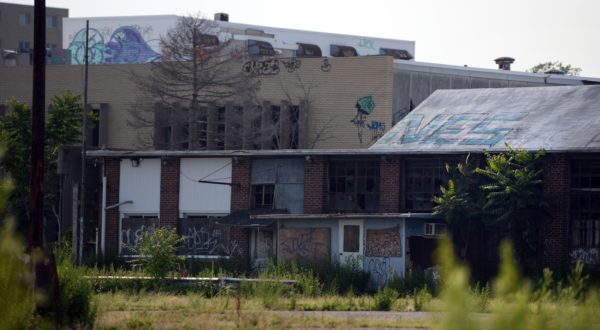BY HUGH BAILEY
Hearst Connecticut Media
With federal funding continuing to lag, the state of Connecticut has increased its already active programs to clean up polluted properties.
Gov. Dannel P. Malloy recently signed into law an increase in the state”™s brownfield programs to $40 million of bond funding for the next two years. The previous two-year budget allocated $30 million.
“The funding the governor and the Legislature provided allows us to take on more sites in more communities and bring them back to productive reuse,” said Tim Sullivan, deputy commissioner of the Department of Economic and Community Development, who directs the state brownfield initiative. “And the program changes will help us do more projects more quickly and more efficiently, with fewer delays.”

- The former Remington Shaver plant in the South End of Bridgeport is a brownfield, with contamination from former industrial uses adding to redevelopment expenses. Photo by Autumn Driscoll
Those changes include a series of improvements aimed at tackling the state”™s oversupply of land held back from development by real or perceived contamination from former industrial uses.
One new program will allow cities to put together plans for clusters of brownfields, rather than go parcel by parcel, which will help in prioritizing. Another will allow for additional funding to be allocated in case of cost overruns from unforeseen environmental issues or other problems, rather than making a project wait to compete for additional dollars in the next round of funding awards.
The allowable size of individual loans has also been increased to $4 million from $2 million. Grants are already allowed up to $4 million.
During a state budget session characterized by acrimony over tax hikes and budget cuts, the brownfield funding bills passed both chambers unanimously.
“We see it as investment versus spending,” Sullivan said. “It brings significant returns in terms of economic benefits and jobs. It brings unproductive properties back onto the tax rolls.”
For every dollar spent by the state on brownfield programs, private entities put in almost $4, he said.
As the state has ramped up its programs, what had been the biggest source of funding, the federal Environmental Protection Agency, has pulled back. It”™s the consequence of a number of factors including the Budget Control Act of 2011, which cuts domestic spending almost across the board.
Sen. Chris Murphy, in a tour recently of state brownfields, said the cuts, known as sequestration, have had a serious impact on programs that have bipartisan support, including for site remediation.
The state is helping to fill the gap, but can only go so far, Sullivan said. “The EPA is a really important partner, and they”™ve had significant budget challenges that the Connecticut delegation has tried to fight,” he said. “It”™s not just funding, but in terms of regulatory oversight. Making sure they have the staffing both in D.C. and in the regions is a really important piece of the puzzle.”
Hearst Connecticut Media includes four daily newspapers: Connecticut Post, Greenwich Time, The Advocate (Stamford) and The News-Times (Danbury). See ctpost.com for more from this reporter.
















